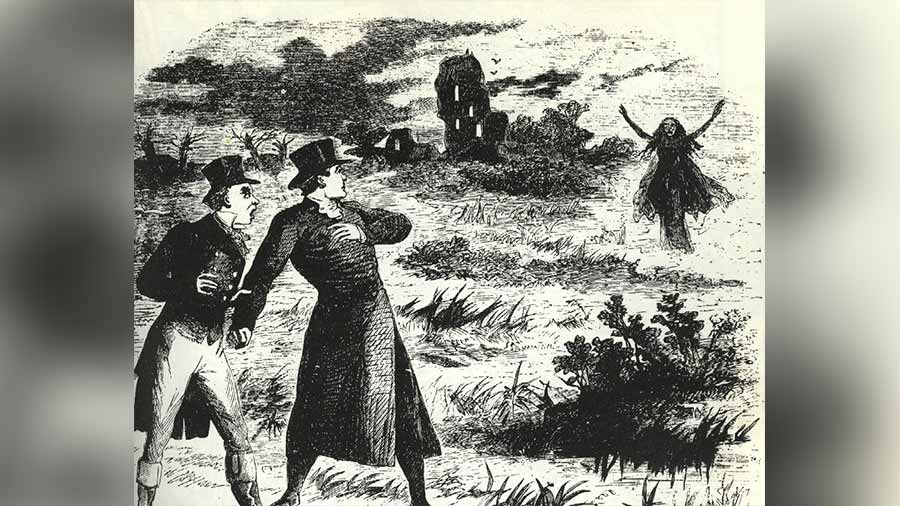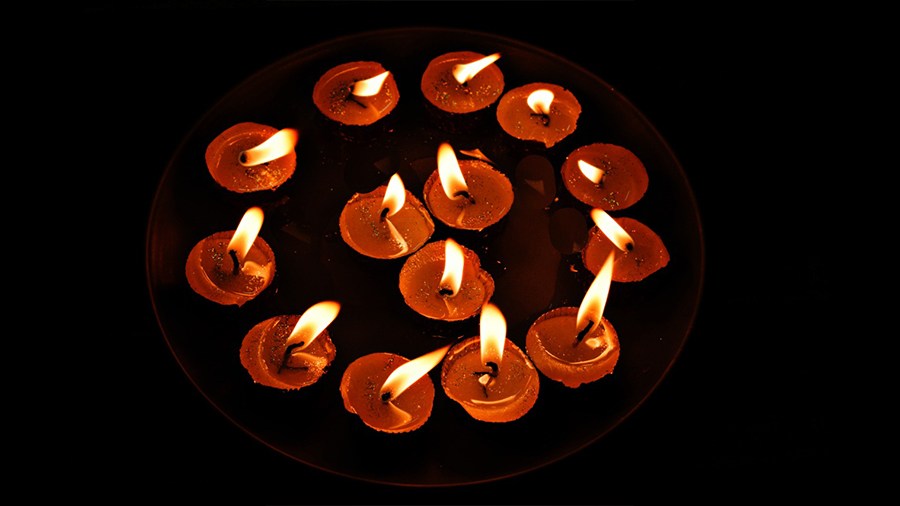One group on the way out. Another on the way in. From this world to their world. From their world to this world. Between their timeless world and the night of earthen lamps and hollowed-out pumpkins. Get the drift? Read on, then, if you will, for one day this write-up might be about us.
For the present, though, it’s about those who have passed on.
Days after people here left their doorsteps lit with little earthen lamps to welcome the spirits of their ancestors, the time is upon us again to remember the dead this last day of October. The essence is the same: what Bhoot Chaturdashi is to this side of the globe, Halloween is to the western world, a “complementary celebration”, according to Sukumar Sen, the late scholar and linguist.
“In Scotland, Western Europe and North America, the complementary celebration to our Bhoot Chaturdashi is Halloween (Hallow Evening or holy evening). According to the believers, that day, very close to the day of Bhoot Chaturdashi, the spirits get the relief to emerge out of their coffins and graves. They come to visit their heirs,” Sen would write.
If nothing else, what the two celebrations prove is that despite external differences, humankind shares inherent traits and beliefs that go deeper than what is visible. The concept of “life after death” is one such belief. It might vary according to the locale, time, environment and culture, in the views and rituals observed, but the imagination circling around the return of a dead person is similar almost everywhere, whether it is the Orient, where the supernatural has always aroused interest, or in the apparently more rational West. So, on Halloween this year, let’s take a look at a few legends and supernatural characters from the West’s wide spook-scape, some of them famous, some not so well known.
The vampire
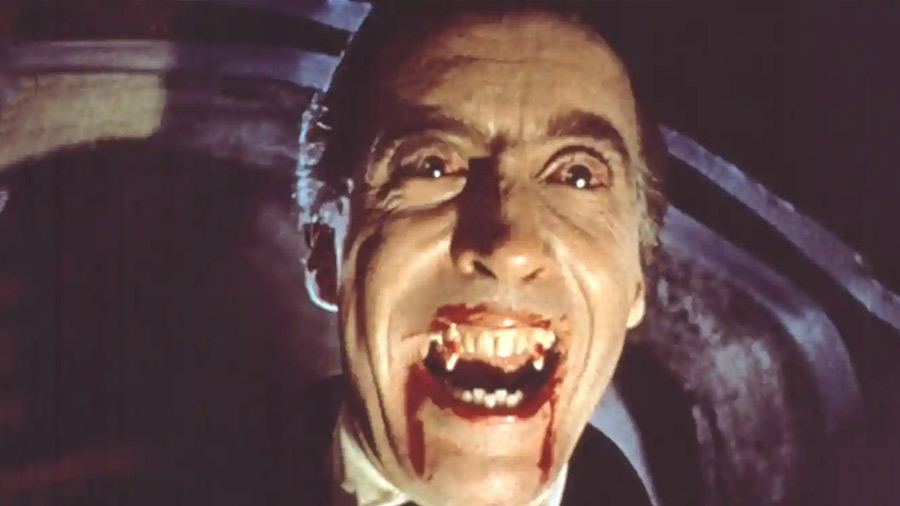
Christopher Lee as Count Dracula in the 1958 film ‘Dracula’
One of the most well-known supernatural characters of the western world is the vampire, popularised by Bram Stoker in his 1897 novel Dracula. Tales about vampires, apparently flesh-and-blood forms of humans once alive and who were said to feed on the life blood of their victims, can be traced to late 16th-century Eastern Europe. According to folk beliefs, the corpses of vampires remain in pristine condition in their graves, from where they crawl out in the dead of night to suck the vital essences off living people and then return again to their coffins.
“[V]ampires were corpses, who went out of their graves at night to suck the blood of the living, either at their throats or stomachs, after which they returned to their cemeteries,” the French philosopher Voltaire (1694-1778), an outspoken advocate of civil liberties and social reform, would write in his Dictionnaire philosophique (Philosophical Dictionary) of 1764, according to a translation available online. “The persons so sucked waned, grew pale, and fell into consumption; while the sucking corpses grew fat, got rosy, and enjoyed an excellent appetite. It was in Poland, Hungary, Silesia, Moravia, Austria, and Lorraine, that the dead made this good cheer.”
According to the Encyclopaedia Britannica, vampire myths were especially popular in Eastern Europe. “Digging up the bodies of suspected vampires was practised in many cultures throughout Europe, and it is thought that the natural characteristics of decomposition — such as receding gums and the appearance of growing hair and fingernails — reinforced the belief that corpses were in fact continuing some manner of life after death.”
A key characteristic of vampires was that mirrors did not capture the reflection of these fictional “undead” creatures.
Poltergeists

The Cambridge Dictionary defines a poltergeist as a spirit or force that moves furniture and throws objects around in a house
Another supernatural being is the poltergeist, a type of mischievous ghost or spirit supposedly responsible for causing noisy, physical disturbances. The word poltergeist comes from the German ‘polter’ — noise or racket — and ‘geist’, which means spirit, and the term translates as “noisy ghost”.
The “existence” of poltergeists is, however, not limited to Germany or other European countries; reports of such invisible entities have also come from America.
The Cambridge Dictionary defines a poltergeist as a spirit or force that moves furniture and throws objects around in a house. Among the unpredictable disturbances attributed to these disembodied spirits are inexplicable sounds, sudden screams and breaking of household items, including furniture. A poltergeist’s malice is often focused on a particular member of a family.
Like the vampire myth, the poltergeist phenomenon has also been explored by filmmakers. Back in the 1980s, Poltergeist, an American supernatural horror film based on a story written by Steven Spielberg, went on to become a critical and commercial success, underscoring yet again people’s fascination with the supernatural.
Goblins and banshees
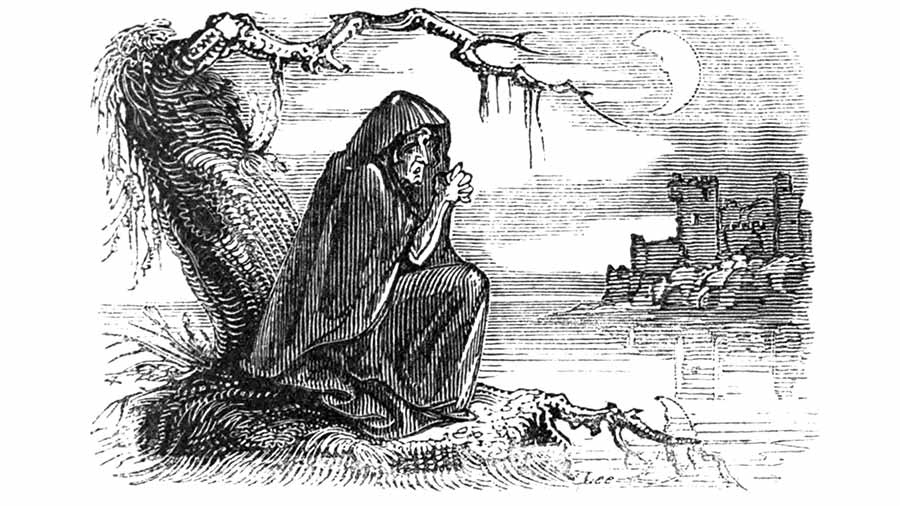
The Bunworth Banshee, from ‘Fairy Legends and Traditions of the South of Ireland’, by Thomas Crofton Croker, 1825
Among other supernatural spirits popular in European folklore are the goblin and the banshee. While goblins are supposedly small and hairy creatures, usually mischievous, a banshee is an Irish female spirit whose nocturnal wail, according to Celtic folklore, was believed to warn people who heard them that someone from their family would die soon. A banshee can appear intimidating and unsanitary or as a young and beautiful lady. Banshees supposedly keep their hair loose and wear long, red clothes.
Zombie

Zombies are essentially revenants, animated corpses believed to have been revived through certain procedures, such as sorcery or black magic. Above, a ‘Zombie Walk’ in Pittsburgh, US Wikimedia Commons
Another “undead” being is the zombie, a fictional creature whose roots can be traced back to Haitian folktales. Zombies are essentially revenants, animated corpses believed to have been revived through certain procedures, such as sorcery or black magic. A key defining feature of zombies is the absence of free will, which means they remain under the control of whoever reanimates them. A Google search of the word throws up this definition, among others: “A corpse said to be revived by witchcraft, especially in certain African and Caribbean religions.”
The word is said to have entered the English lexicon in the 18th or 19th century, courtesy the British poet Robert Southey, who spelt it as “zombi”, in his History of Brazil, while recounting an uprising. Southey, however, used the word in reference to its original sense of a deity, not the contemporary meaning that connotes a revived but soulless corpse.
The supernatural in legend and literature
Long before the supernatural spawned the genre of Gothic and horror literature, ghosts had found mention in Homer’s works, although they would disappear and slip “underground like a wisp of smoke” (The Iliad). Much closer to our age is the legend of Count Estrach of Spain. The count, who would suck the blood of villagers, was somewhat similar to Count Dracula, the title character of Stoker’s 19th-century Gothic novel Dracula.
According to Catalan mythology, Count Estrach, whose original name was Arnald Estruch, died fighting against witchcraft in the year 1173. But in afterlife, so goes the legend, he would turn into a vindictive spirit and villagers would remain alert about him.
A few hundred years later, the ghost would be portrayed as a central character in the affairs of the living. In Hamlet, Prince of Denmark, the supernatural becomes the play’s starting point as the ghost of Hamlet’s father comes to urge the prince to avenge his father’s “foul and most unnatural murder”, setting in motion the plot and the tragedy that would unfold.
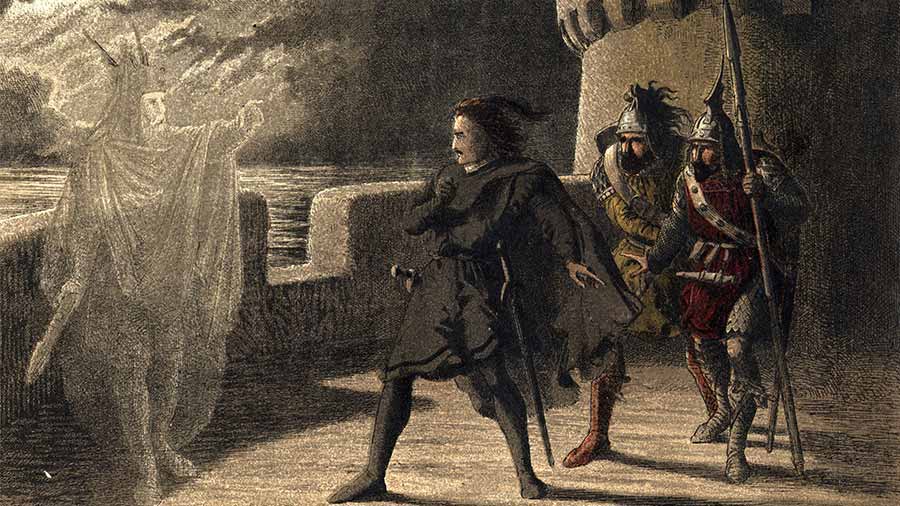
Horatio, Marcellus and Hamlet (centre) encounter the ghost of the late King Hamlet Hulton Archive/Getty Images
Ghosts also figured in popular songs and ballads. In Sweet William’s Ghost, a 17th century English ballad, the lover William keeps returning to his lady love even after his death.
There was, however, nothing balladic about London’s Cock Lane ghost, a supposed apparition that would cause tremors in 1762, although a lot of people would hear the sound of knocks and scratches before a commission that included Samuel Johnson would conclude that it was all a hoax. The controversy had all the ingredients of a potboiler — love, death, inheritance and debt — and, as long as it lasted, it would draw throngs of onlookers to the small street in Smithfield in the city of London.
Fascination with ghosts
Two years later, in 1764, Horace Walpole’s The Castle of Otranto would be a hit with readers. The novel, where a ghostly form appears, is widely regarded as the first Gothic novel before Mary Shelley’s Frankenstein (1818) and Stoker’s Dracula would forever capture the vivid imagination of readers.
Humankind’s fascination with ghosts would be triggered again in 1835 with the Brown Lady of Raynham Hall. According to legend, The Brown Lady, a spirit that reportedly haunts Raynham Hall in Norfolk, was the ghost of Dorothy Walpole, a member of the Walpole family.
It would, however, be around the middle of the 19th century that stories about the mysterious and the supernatural would really take off, with Irish writer Sheridan Le Fanu, author of the 1872 vampire novella Carmilla, and Edgar Allan Poe exploring the genre in Europe and America simultaneously. Ghosts also figure in Charles Dickens’s A Christmas Carol (1843), although it is essentially a Christmas story of redemption.
Among other authors worth mentioning in the context of the supernatural is M.R. James, an English author and medievalist scholar best known for his ghost stories. ‘Oh, Whistle, and I’ll Come to You, My Lad’, included in his collection Ghost Stories of an Antiquary (1904), is one of James’s most celebrated stories in this genre.
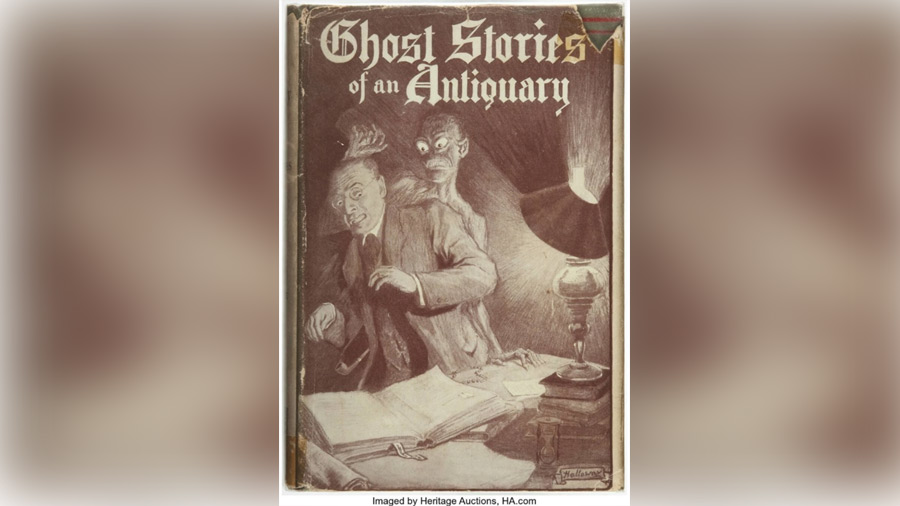
‘Ghost Stories of an Antiquary’, is one the most celebrated stories in this genre by M.R. James, an English author and medievalist scholar best known for his ghost stories Heritage Auctions
A widely read ghost story would come from another James, the American-born British author Henry James, whose novella, The Turn of the Screw, published in 1898, operates at complex levels of ambiguity. The story is about a governess, who is convinced that she has seen ghosts in the house; two seemingly innocent children, and two apparitions, although it is not clear whether the governess is trying to project her imagination onto the other characters.
The treatment of the supernatural has evolved over time. Human perceptions have changed too but some traditions have remained, like Bhoot Chaturdashi and Halloween, both a celebration of an intangible realm but deeply linked to the social and cultural milieu of the places where they are observed. As we wrap up our discussion on the supernatural, Halloween would have arrived and with it the denizens of the spirit world.
Who knows, they may have even passed those on the way back to their other world.
